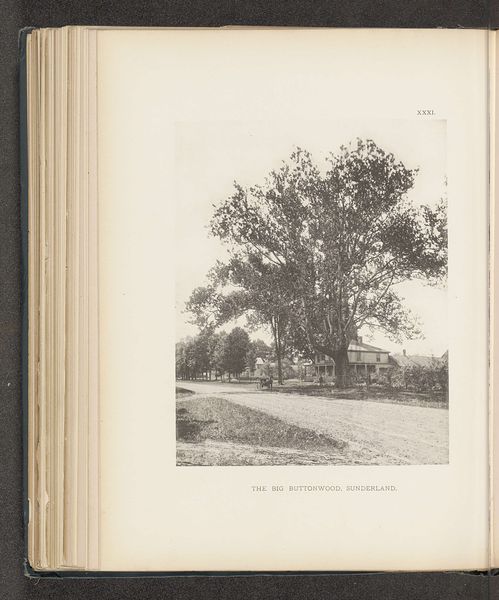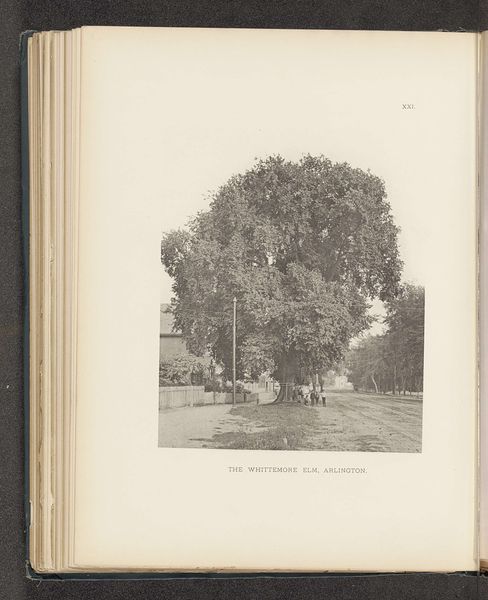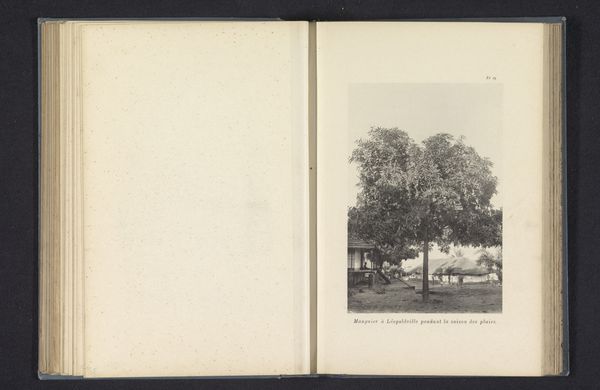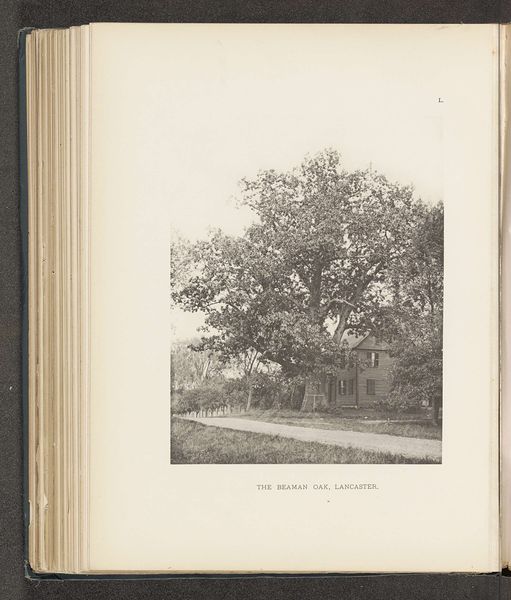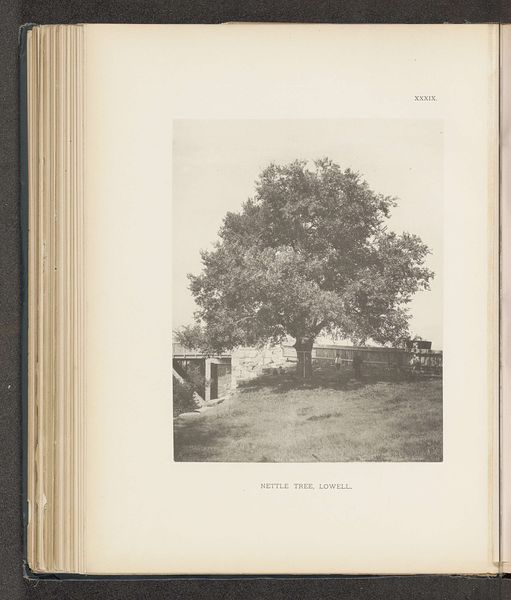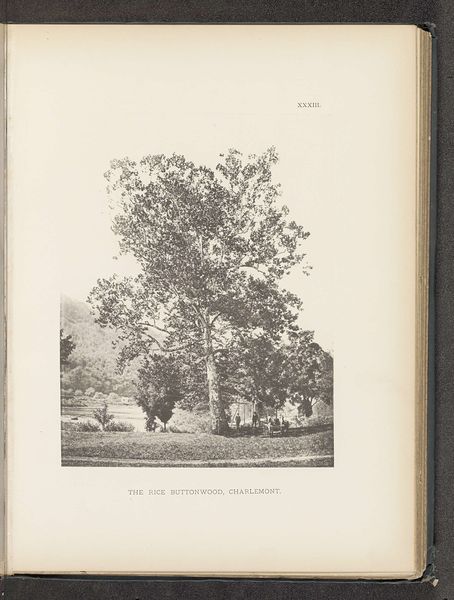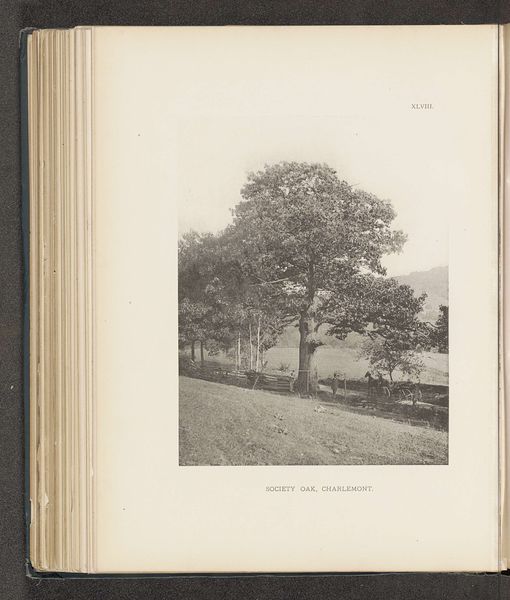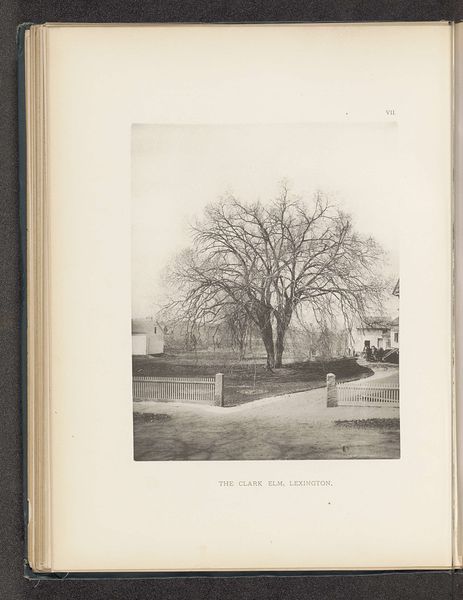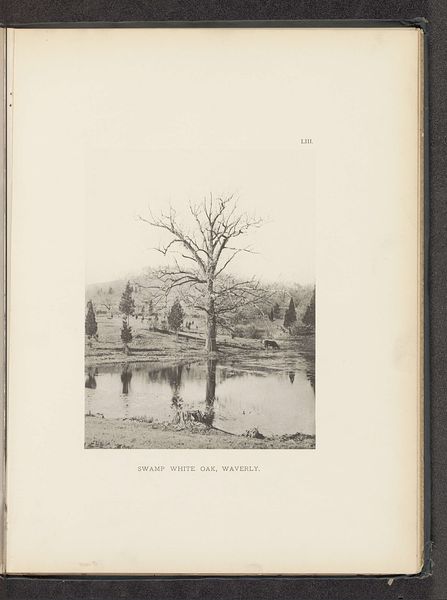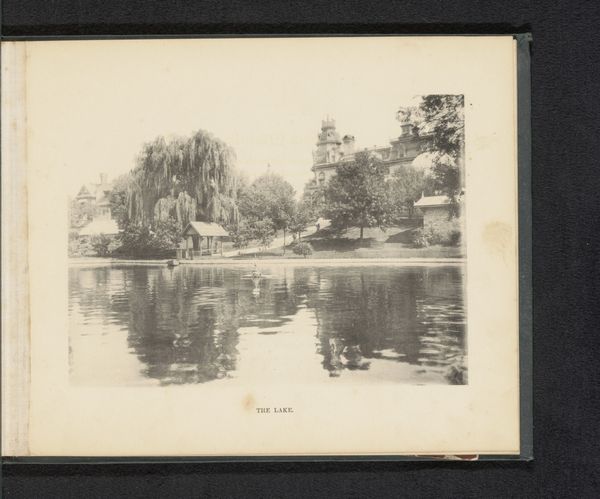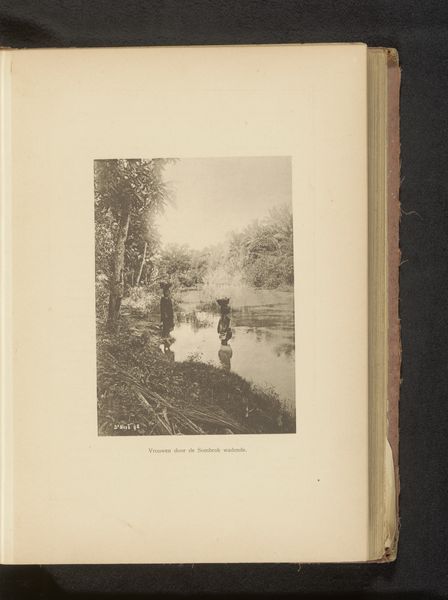
print, photography, gelatin-silver-print
# print
#
landscape
#
photography
#
gelatin-silver-print
Dimensions: height 218 mm, width 173 mm
Copyright: Rijks Museum: Open Domain
Editor: This gelatin-silver print, called "Nettle Tree, Lowell," dates from before 1890, and is attributed to Henry Brooks. It has an aura of tranquility, like a scene captured mid-dream. The way the water reflects the light… What symbols or deeper meanings do you see at play here? Curator: It is fascinating how photography at this time—and Brooks’s eye in particular—elevates the seemingly mundane. Consider the Nettle tree itself. Often seen as an unwelcome weed, its prominent positioning transforms it into a symbol. What associations does "nettle" evoke for you? Editor: Stinging… Irritation, maybe. Something to avoid? Curator: Precisely! So, why immortalize it? Perhaps it’s about perspective. The very thing we disregard or find unpleasant might possess a quiet beauty or even power. Look at its stature – it dominates the scene, doesn’t it? Think about Lowell’s industrial landscape, and how nature, even something as simple as a ‘weed,’ endures amidst it. Editor: I see your point! It’s like a resilient spirit thriving despite harsh conditions. The quiet beauty feels more poignant knowing that. Curator: Exactly. And observe the lone figure standing near the tree. What feelings does it give you? Editor: Isolation, maybe even a connection to the nature, almost a peaceful recognition of each other. Curator: Brooks may subtly invite us to rethink our relationships to nature, even its overlooked corners, allowing for connection and quiet reflection, perhaps even showing the perseverance of life in unexpected places. Editor: That gives me a lot to think about. I hadn't considered the loaded symbolism of something so simple as a weed. It really changes my perception of the whole piece. Curator: Indeed. It reminds us that cultural memory and personal meaning can be layered within the simplest of images, always present to reveal new understanding.
Comments
No comments
Be the first to comment and join the conversation on the ultimate creative platform.
